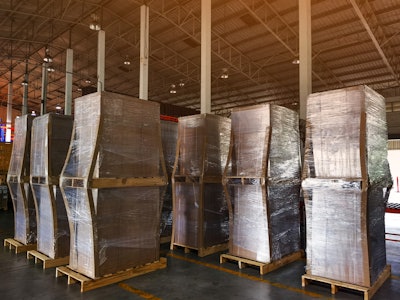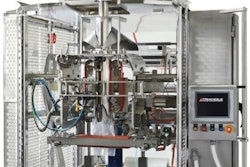Disposal costs can be a large annual expense. A recycling program, on the other hand, can generate revenue, in addition to providing the practitioner with sustainability bona fides.
Stretch wrap recycling is distinguishable in several ways. One is that facilities are high-volume accumulation sites, lending economies-of-scale to collection and hauling. Another is that stretch wrap (linear low-density polyethylene) is relatively homogeneous, capable of mixing with stretch wraps from various suppliers, formulation differences notwithstanding. Yet another is that stretch wrap is identifiable on sight by employees, simplifying collection and separation. Additionally, stretch wrap, because it’s not primary packaging, doesn’t need to be cleaned of product residuals. The aforementioned don’t comprise an exhaustive list, but they explain why stretch wrap recycling is a growing industry with an expanding infrastructure of facilities, markets, and intermediaries.
Facilities divide into two camps: those that don’t recycle stretch wrap and those that do.
The former should determine the revenue potential. Needed is knowledge of: current prices; price fluctuations, and drivers of fluctuations. Such knowledge is indispensable in identifying potential markets, determining supply chain partners, and negotiating best terms.
If the revenue potential justifies, a facility should conduct a costs/savings analysis, pitting disposal costs against recycling savings. At minimum, disposal costs include hauling, along with fees (for example, those charged by landfills). Facilities that don’t recycle stretch wrap most likely mix it with other waste, there being no need to separate it. Such facilities should determine the percentage of its waste that is composed of stretch wrap. That percentage, multiplied by the annual disposal costs, is what can be saved through diversion.
Offsetting the savings are the costs associated with a stretch wrap recycling program. Those costs may be of the start-up variety. Collection bins are an example, the number of which should reflect the size of the facility and the quantity of stretch wrap generated. The cost of the bins can be spread over their useful life. Another cost may be balers, although certain intermediaries supply them as part of their service. A facility that already has a baler that it uses for corrugated can use it for stretch wrap. The bales, however, won’t be as dense as those made with a baler designed for stretch wrap. The denser the bales, the greater the transportation-related savings and efficiencies. In-facility labor costs will vary, depending on whether certain tasks (baling, for example) require an increased employee count.
As for facilities already involved in recycling stretch wrap, the continuously asked question should be: are we getting the most from our program and how can we improve it? Any affirmative answer must include employee education. Employee buy-in is essential, not just through compliance, but also through the submission of ideas and suggestions.
To command the best price, a facility’s stretch wrap must be high-quality, meaning as free of contaminants as feasible. It starts with communications with the shippers of the stretch-wrapped loads. Shippers should use plastic strapping (ideally polyethylene), if it provides adequate restraint, since the receiving facility can include it in the stretch wrap bales. Paper placards, attached by shippers for identification and inventory control, are a source of contamination. Receiving facilities need to remove them before baling; better yet, shippers should be asked to substitute plastic film (again, ideally polyethylene) for paper, for the aforementioned reason.
Loads should arrive at the facility with the stretch wrap as pristine as possible. That result, in large measure, depends on the storage and handling practices of the shipper, in addition to the interior of the transportation vehicle, which should be reasonably free of dirt and debris.
After loads arrive at the facility, care should be taken to keep the stretch wrap clean while on the loads. After removal, the stretch wrap should be immediately placed in designated bins and never placed on the floor. Bales should be stored under conditions that protect cleanliness, preferably indoors; however, if stored outdoors, bales should be protected from the elements (e.g. rain), but also from UV degradation.
Separate from cleanliness is color. Pigmented and opaque stretch wraps have specific uses. Nonetheless, clear stretch wrap should be the choice whenever possible because of its higher recycling value.
Of packaging materials, stretch wrap comes closest to being a universal candidate for recycling, and, it’s the rare (non-existent?) facility that receives no stretch-wrapped loads. And to make such a claim is no stretch.


























